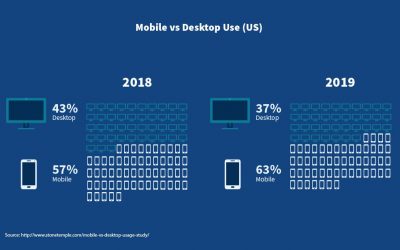Websites are crucial components that provide a host of benefits for businesses, individuals and institutions. How well a website does is determined by both its design and performance. This is where website developers and designers come into the equation. These roles are often considered interchangeable especially by business owners who are not well-versed with the technical aspects of this field.
Introduction to Website Design and Development
Website designers are visual artists who are responsible for creating a website’s structure, usability, and aesthetic appeal. On the other hand, website developers are professionals who create and update a website’s fundamental framework.
A website designer needs to possess an array of technological, creative, and graphic talents. A website developer, alternatively, has the duty of transforming the web aesthetic developed by the designer into a usable website using coding languages like Python, PHP, JavaScript, and HTML.
If you’re thinking of working as a website developer or designer, you must have a thorough awareness of the various jobs, along with the educational requirements and skills needed for each. Additionally, you need to think about things like the typical salary, chances for professional advancement, and the numerous forms of web development and design roles.
Here’s a detailed look at how the two are different from one another:
What Website Designers Do
A diverse range of duties and obligations are assigned to website designers. However, a designer’s primary responsibility is to produce a website’s aesthetic elements and layout.
Ensuring the site is both user-friendly and aesthetic visually with the intention of retaining visitors for as long as needed is frequently their goal. This entails considering and creating features that promote conversions in addition to the overall layout and framework structure. Also, they need to develop web pages with the objective that they perform efficiently across different devices.
Website designers must follow a set of standards and best practices, as well as stay current on web design trends. They frequently work with logos, color schemes, fonts, and other branding elements. To ensure that every website has a uniform appearance, many people even establish web design style guides.
The creation, management, and supervision of a few other important papers and resources falls under the purview of designers. This comprises the following:
- Website summaries
- Web design agreements
- Website proposals
- Questionnaires about website design
A website designer must conduct some testing and research as part of their work. Making sure the website is created to fulfill user expectations and client requirements is crucial. Therefore, a website designer must also think about how their design may impact the website’s coding. Developers then use the site’s code to bring the site’s structure and mockup to life.
The work of website designers frequently includes certain post-launch services. They might offer services for content production and updating, maintenance and monitoring, and regular performance evaluations.
Types of Website Designers
There are various kinds of website designers, each specializing in a particular and distinctive kind of work. Which are:
Designing UX
UX designers work to make sure that a website is structured in a way that provides a satisfying user experience and engages users. Their responsibility is to develop data-driven, human-centered designs. This calls for extensive testing and study to collect and analyze data that will come in handy when making their final design decisions.
A UI Designer
A website’s design team should include UI designers as well. They prioritize interactions together with the experience it offers. More specifically, their tasks include improvement of a website’s usability and optimization so that it can help promote conversions.
Visual Designers
Much like it is evident from their names, visual designers deal with a website’s visual components and layout. In this project, elements of UI and UX design are combined. A visual designer’s responsibilities center on making the interface both aesthetically beautiful and simple to use.
A large chunk of website designers work with a limited number of devices, applications, and programs. The most significant of these are design and editing applications and software, for instance Adobe Photoshop.
Additionally, they might make use of tools for image compression and optimization along with sources for stock photos. Additionally, a CMS like WordPress and a platform for building websites like Elementor are frequently used by website designers.
Tools for wireframes and prototypes are also beneficial. They allow website designers to plan and generate models and mockups for the site’s structure to be tested as the project is being developed.
The Competencies Website Designers Require
Depending on the function and specialty of each individual, different skill sets are needed for website designers to be successful. However, in general, some crucial abilities include:
- Branding, color theory, and typography
- Conversion Rate Optimization (CRO)
- Design tools and software
- HTML and CSS knowledge
- Responsive and interaction design
- Understanding the Principles of website design and web accessibility standards
- User journey mapping
- Wire-framing and prototyping
A number of non-technical abilities are also crucial for website designers to possess. For instance, effective customer communication to manage expectations requires great communication skills. Additionally, in order to make sure that each project runs as smoothly as possible, having the capacity to work with others on a team, such as website developers, is crucial.
What a Website Developer Does
Building and maintaining a website’s fundamental framework is the main responsibility of a website developer. Their job entails doing a lot of technical labor, which includes using sophisticated programming languages and intricate coding. In summary, they translate the concepts and ideas presented by designers into live, real, and fully-operational websites.
Specifically, a website developer is responsible for building the website. This entails adding user-facing features and functionality as well as coding and setting up the databases and servers on the back end. They may also handle a number of activities post launch of the website, including maintenance, support and resolution of hosting or server difficulties, in addition to performing testing and debugging.
It could be useful to develop an analogy between web development and another industry, like building, to better comprehend what it entails. What a construction company is to a new house, a website developer is to a website. The architect (website designer) creates design plans and blueprints, which the developer uses to establish the groundwork for a practical, sturdy structure.
Different Types of Website Development Roles
Website developers typically concentrate on a few programming languages. However, to what extent these are employed will vary depending on the web development work they conduct.
Three main categories of website developers exist:
Front-End Developer
With the use of Content Management Systems like WordPress and other languages, front-end developers create the real website code. The majority of front-end website development, also referred to as development of client facing interface, entails programming and coding the user-visible graphic components of websites. Therefore, front-end website developers and website designers frequently work together and their tasks overlap.
Back-End Website Developers
Advanced programming languages like SQL, PHP, Ruby, C# and Java, along with NodeJS and additional frameworks, are used by back-end developers to write the database and server. Back-end website development, mostly entails website features that take place “behind the scenes”. These are invisible to front-end users.
Full-Stack Website Developers
Last but not least, full-stack website developers write code for a website’s back and front ends. They are quite familiar with how these elements function separately as well as together. Full-stack website developers set up servers, program Application Programming Interfaces, query databases, and more in addition to creating web pages using CSS, HTML, and JavaScript.
The Competencies Website Developers Require
As we mentioned before, specific technical skill sets are necessary for website developers to perform their duties. A website developer should have at least some familiarity with:
- Back-ends and databases
- Coding and programming languages such as PHP, HTML, CSS, and JavaScript
- Content Management Systems (WordPress, etc.)
- JavaScript frameworks like jQuery
- Search Engine Optimization (SEO)
- Testing and debugging
Non-technical skill sets are also useful for website developers in addition to technical ones. This includes the ability to solve problems and think analytically, both of which are beneficial while debugging. In order to effectively collaborate and communicate with clients and other important parties, it is also crucial to possess these skills.
There are quite a few other platforms and tools that website developers utilize in the course of their work. This includes GitHub for code versioning and Jira for issue tracking.
Additionally, developers frequently use tools like DevTools from Chrome for debugging and testing. It’s also essential to be conversant with File Transfer Protocol applications like FileZilla and hosting control panels.
What Are the Differences Between a Website Developer and a Website Designer?
Hopefully, by now, you are more aware of the main differentiations between a website developer and a website designer. Let’s look at a quick summary of the key differences between the two roles to bring everything together.
Developers concentrate on functionality and structure, while designers concentrate on usability and aesthetics. By building a model based on UI, visual, and UX components, website designers conceptualize the notion and visuals of a site. In case the underlying concept is both technically and financially feasible, website developers program and build code for the website.
Website designers need to have a strong foundation in technological expertise. This includes being able to comprehend sophisticated frameworks and programming languages. Although some analysis and research is required, a website designer’s job is more about the aesthetics and creative angles of a website than it is about the technical aspects.
Website developers have several designations and specialties, such as back or front-end, and full-stack developers. UI, UX, and visual designers are 3 main categories of website designers.
Frameworks and coding libraries, code versioning and issue tracking software like Jira and GitHub, hosting FTP clients and control panels. Also CMSs are some of the tools and programs that website developers frequently utilize. In addition to wireframing, website designers frequently employ a CMS like WordPress, design alteration software like Photoshop, and website builders like Elementor.
Website creation, development, and maintenance require the skills of both website developers and designers. In the end, the two jobs rely on one another to provide a superior result.
The primary distinguishing factor is that website developers concentrate on the technical facets of the project, including coding and programming. Designers handle the conceptual and graphic tasks required to guarantee a strong UI and UX.
Conclusion
Website designers and developers have distinct roles. While one is more concerned with visuals and aesthetics, the other focuses more on responsiveness and performance. However, both have a crucial role to play when it comes to building a website that can attract potential customers and retain them long enough to convince them into trying out and/or purchasing a certain product or service. Luckily, at Nora Kramer Designs, we are able to fulfill both roles, unlike many of our competitors — a rarity in our line of business!
- A Step-By-Step Guide to Designing a Mobile-Friendly Website - November 11, 2024
- How Content Marketing Enhances Your Website’s SEO Performance - November 11, 2024
- How to Pick the Perfect Color Scheme for Your Website Design - November 11, 2024




